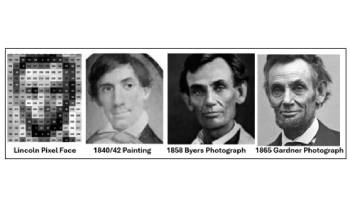
Are we there yet? All the puzzle pieces are here: a 2” miniature portrait on ivory dated circa 1840-1842, discovered alongside a letter detailing the owner’s familial ties to Mary Todd Lincoln. This portrait’s distinctive features echo President Lincoln’s unique facial asymmetry. However, despite intensive investigation, no historical document has been found to definitively link this miniature to Lincoln. This research aims to bridge art and science to determine whether this painting represents the earliest image of Abraham Lincoln, potentially opening avenues for future collaborations in identifying historical faces from the past. A key contributor to this effort is Dr. David Stork, an Adjunct Professor at Stanford University and a leading expert in computer-based image analysis. Dr. Stork holds 64 U.S. patents and has authored over 220 peer-reviewed publications in fields such as machine learning, pattern recognition, computational optics, and the image analysis of art. His recent book, Pixels and Paintings: Foundations of Computer-Assisted Connoisseurship1, fosters a dialogue between art scholars and the computer vision community.

Transfer Learning is an important strategy in Computer Vision to tackle problems in the face of limited training data. However, this strategy still heavily depends on the amount of availabl data, which is a challenge for small heritage institutions. This paper investigates various ways of enrichingsmaller digital heritage collections to boost the performance of deep learningmodels, using the identification of musical instruments as a case study. We apply traditional data augmentation techniques as well as the use of an external, photorealistic collection, distorted by Style Transfer. Style Transfer techniques are capable of artistically stylizing images, reusing the style from any other given image. Hence, collections can be easily augmented with artificially generated images. We introduce the distinction between inner and outer style transfer and show that artificially augmented images in both scenarios consistently improve classification results, on top of traditional data augmentation techniques. However, and counter-intuitively, such artificially generated artistic depictions of works are surprisingly hard to classify. In addition, we discuss an example of negative transfer within the non-photorealistic domain.